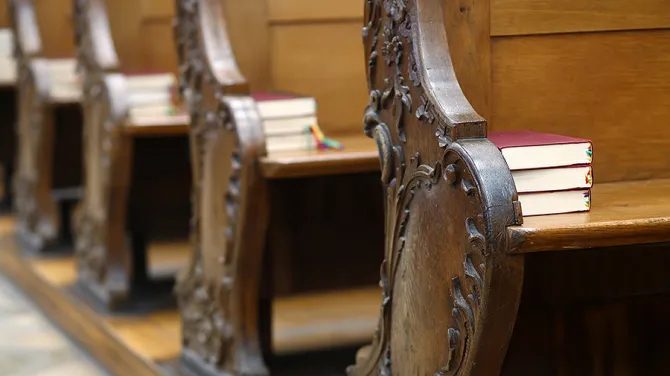The percentage of Americans who attend religious services is now “significantly lower” than before the COVID-19 pandemic, especially among young people and other groups identified as less likely to regularly attend, a new survey indicates.
“The COVID-19 pandemic disrupted much of American society, including religious worship,” said a January 2023 report on the survey “Faith After the Pandemic” from the American Enterprise Institute’s Survey Center on American Life.
“Rather than completely upending established patterns, the pandemic accelerated ongoing trends in religious change. Young people, those who are single, and self-identified liberals ceased attending religious services at all at much higher rates than other Americans did.”
“At least in terms of religious attendance, the pandemic appears to have pushed out those who had maintained the weakest commitments to regular attendance,” the American Enterprise Institute report said.'
As of spring 2022, 33% of Americans said they never attend religious services, up from 25% before the World Health Organization declared a pandemic in March 2020. Religious affiliation, though, is largely unchanged, according to the survey.
The results come from researchers at the NORC at the University of Chicago, who conducted the 2022 American Religious Benchmark Survey on behalf of the American Enterprise Institute (AEI).
The pre-pandemic responses about religious practice came from 9,425 randomly selected interviewees who participated in NORC’s AmeriSpeak panel from the period 2018 to March 2020. The same interviewees were surveyed again from February to April 2022.
Among white Catholics, the percentage of those who do not attend religious services increased from 11% to 18%. Hispanic Catholics who never attend increased from 10% to 20%. Almost half of Catholic respondents continued to say they attended religious services “infrequently,” the survey found.
However, consistent Mass-goers tended to continue their churchgoing habits. The percentages of white Catholics and Hispanic Catholics who regularly attend religious services now compared with before the pandemic were relatively unchanged at 30% and 23%, respectively.
The groups most likely to attend religious services, and to attend regularly, are political conservatives, adults age 50 and older, women, married adults, and people with a college degree. Their frequency of attendance was “largely similar” to before the pandemic and spring of 2022, the AEI report said.
Young people, political liberals and moderates, and Americans without a college degree were the most likely groups not to attend religious services before the pandemic and as of spring 2022.
The habits of the young adult population, those aged 18–29, showed significant changes. About 30% of young adults attend religious services less often now, while only 12% are more religiously active compared with before the pandemic.
The survey found relatively little changes in church attendance among Mormons, white evangelical Christians, and Jews.
Nineteen percent of adults changed religious affiliation between March 2020 and March 2022, 6% were unaffiliated before the pandemic but are now affiliated, and 5% had a religious affiliation but now are not. Twice as many adults decreased religious attendance than increased attendance.
The observed changes could mean that religious affiliation tells us less about Americans and their religious beliefs and theological commitments, the AEI report said. The changes could mean more polarization between regular attendees of religious worship and their self-identified co-religionists.
“Past research has shown that Americans who regularly attend services are more likely to embrace the formal tenets of their faith and share a similar cultural worldview as their coreligionists,” the report said.
The AEI report appears to set the end of the COVID-19 pandemic in spring 2022. However, the Centers for Disease Control and Prevention has not declared an end to the pandemic, and some localities are reimplementing some public health measures in response to trends.
As of Jan. 6, 1,091,184 people have died of the virus in the U.S. More than 10,000 people have died in the last four weeks, and over 41,400 are currently hospitalized, according to the CDC website. Hospitalization numbers have been rising since November.
Older people, pregnant women, or people with weakened immune systems face a higher risk from infection.
The arrival of the pandemic resulted in many bans on public gatherings and other changes. Some churches fully shut down in compliance with public authorities, while others sought to adapt through outdoor services or internet outreach. Some congregations fully rebelled against legal regulations.
After the first waves of the pandemic, legal challenges to restrictions on public worship tended to prevail in court, especially when religious gatherings were treated more strictly than similar gatherings.

